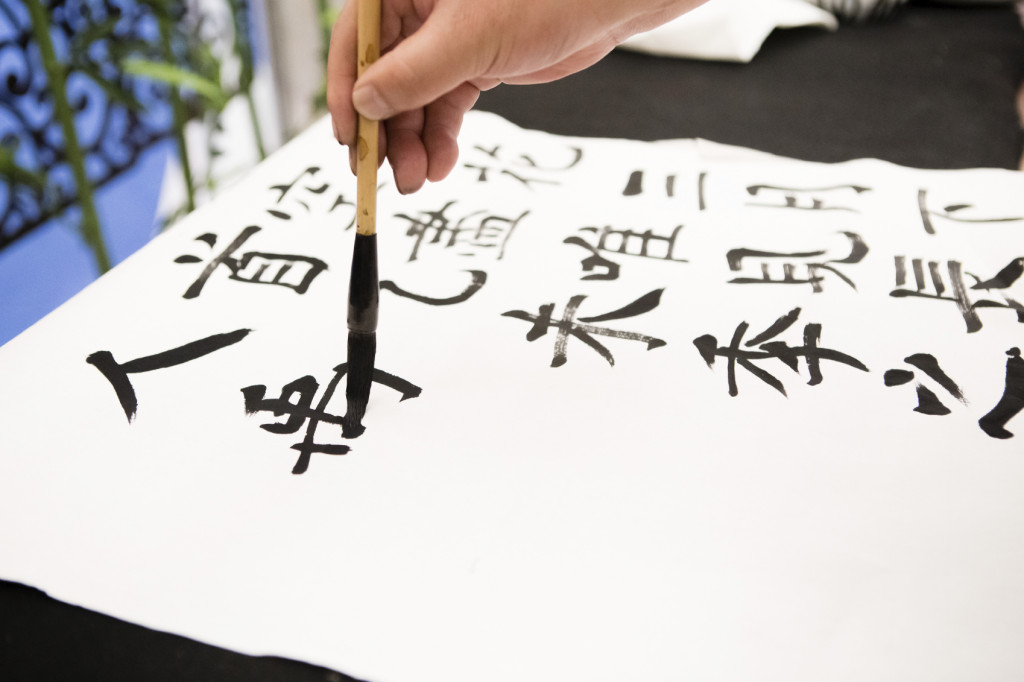An alphabet is a set of letters.
Each letter of an alphabet is a symbol for a spoken sound.
The word alphabet comes from alpha and beta, the first two symbols of the Greek alphabet.
Pictures came first
Before written alphabets, people used pictures to tell their stories ©Getty Images
Before the alphabet that we know today, people drew pictures on cave walls or on animal hides to tell stories about their lives. Later, systems of symbols representing people, places or things were invented. People carved the symbols onto rocks, stones or shells.
The ancient Egyptians carved symbols to represent words. ©Getty Images
Hieroglyphs
One of the best examples of a system of symbols was found in Egypt. The Ancient Egyptians, 4000 years ago, used hieroglyphs. Symbols were also used to represent the gods, water, buildings, food, and other features of daily life. The hieroglyphs represented whole words, not just sounds.
People who traded and fought against the Egyptians spread the idea of an alphabet to other places around the world.
Papyrus
Papyrus plants were used to make writing material in Ancient Egypt. Photo© iStock
The hieroglyphs were used by people known as scribes to keep records for the government. They wrote on thick sheets of papyrus (say pup-eye-russ), a writing material made from pressed strips of the papyrus reed that grew in the marshes and beside rivers.
To make papyrus into a writing material the inside of the triangular stalk was cut or peeled into long strips. It was soaked in water before being rolled and pressed in sheets.
Watch a video on how to make papyrus
The first alphabets
Some historians believe that people known as the Sumerians were the first to use a written language, about 5 000 years ago. Their alphabet and writing was known as cuneiform (say: koon-ee-form) and is wedge shaped marks made in clay tablets. A blunt piece of reed was used to make the marks and was called a stylus. Each wedge shape represented a sound and could be used to spell words. The clay tablets were baked hard.
Wedge-shaped marks in clay was an alphabet for cuneiform writing. Getty Images
Chinese caligraphy uses symbols for words and ideas ©Getty Images
Others say that the Chinese and Indians had the first written language.
The Chinese written language is a mixture of single-sound symbols and symbols that represent a word or an idea.
The Chinese were the first people to make paper. At first is was made of silk which was very expensive. But about 2000 years ago a Chinese clerk working in the imperial court, invented a way to make paper using plant fibre.
Watch a video showing how the Chinese first made paper.
Read more about paper on kidcyber here
Letter of the Greek alphabet ©iStock
The Ancient Greeks created their own alphabet and so did the ancient Romans.
Soon people began joining letters together to make words. The Anglo-Saxons began using Roman letters to write Old English. Our modern alphabet is based on it.
Learning to write our modern alphabet ©Getty Images
A written language meant that people could record facts and ideas about their lives. The laws, history and events could be preserved so that generations later, the records could be read again.
It’s a good idea to use more than one source for gathering information:
You can read the story of each letter of the alphabet here. Where each letter came from and what they looked like when first used.
https://www.daytranslations.com/blog/origin-english-alphabet/
Did you know?
19th century printer’s case ©istock
Capital letters are called ‘upper case’ and small letters are called ‘lower case’. This is because in the early days of printing, metal letters were set in place by hand and inked before paper was pressed onto the letters to print the words. The people who did this were called type setters. As you can imagine, they had many, many metal letters, and they had to be kept in a very organised way to make the typesetter’s job a bit faster and easier. They were kept in special wooden cases with a small cavity for each letter. The capital letters were kept in the upper part of the case and the small letters were kept in the lower part of the case.









